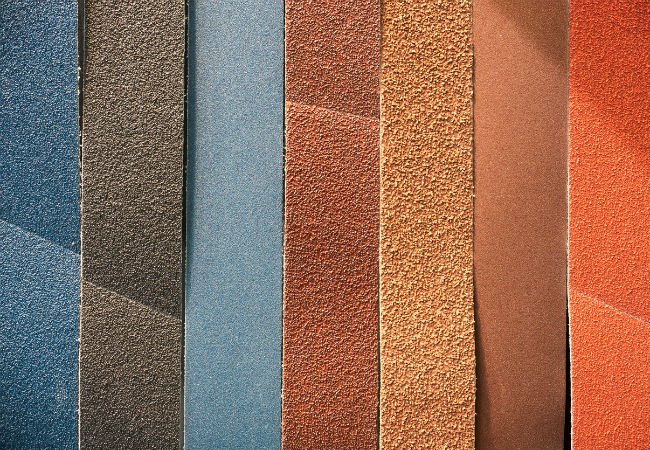Learn about the many different grit types and grades so that you can use the correct sanding materials for each job.
If you’ve ever worked with wood, you’re probably aware of the idea of sanding all edges after cutting: before applying a finish, between coats of paint, and so on. Sanding pads on a tool and materials list may look simple enough to check off until you go to the hardware store and discover stacks of sheets and booklets, each with its own set of numbers, or sandpaper grits.
Sandpaper grades vary greatly, and selecting the proper grit might be difficult if you’re just starting out. Warm up with this fundamental advice and guidelines of thumb. This guide will run you through:
- It’s crucial to choose the proper grit of sandpaper.
- Choosing the proper coarseness for a project
- Considering the ideal sort of grit to pick
Sizing Sandpaper Grit
Sandpaper isn’t composed of sand, but rather tiny particles from either natural or synthetic sources. The grains (also known as grit) are filtered, sized, and collected before being stitched to a paper, sponge, or cloth-type backing to produce an abrasive substance that is useful in a variety of DIY projects.
- The finer the sandpaper grit, the smaller the grains and the more finely ground your sandpaper is.
- A higher number indicates finer sandpaper, whereas a lower score implies larger grains and rougher sandpaper.
Choosing the Right Coarseness
Extra coarse sandpaper
Extremely coarse sandpaper in the 24- to the 36-grit range is a tough lot. It’s for removing paint and varnish that you don’t think will come off. Extra coarse sandpaper may also be required to remove the old flooring. This isn’t something you should use on anything other than the toughest projects.
Coarse sandpaper
The greatest feature of coarse sandpaper is its ability to rough shape wood and remove existing coatings, such as light coats of polyurethane. Typically, 40- to 50-grit coarse grits are used.
Medium sandpaper
The sandpaper is coated with a lubricant and kept on for up to three minutes before being removed, allowing it to cool. Finishing sanding with medium-grit paper (60-100 grit) may be required before applying varnish or staining the wood.
Fine sandpaper
Depending on the type of wood you use, sandpapers run from 120 to 220 grit. For most DIY projects, this sandpaper will be sufficient for the final sanding before the work is completed.
Extra fine sandpaper
Between coats of paint or varnish, extra-fine sandpaper is frequently utilized. Very fine grits are those with a rating of 240, 320, and 400. Extra-or superfine sheets with grits ranging from 600 to 1,200 are ideal for polishing tasks.
Choosing Grit Material
Flint
Flint is a natural grain that has the advantage of being both tough and versatile. It’s great for sanding off old varnish or paint, as it has the same abrasive properties as sandpaper.
Emery
Emery sandpaper is most often used to remove corrosion and/or polish steel and other metals, although it may also be used to smooth rough wood. Its particles’ edges can be too sharp for sanding wood.
Garnet
Garnet is a natural stone that, like goldstone and quartz, is used to make jewellery. It’s softer than flint or emery, so it dulls quickly when used to sand metal. It’s ideal for fine sanding of wood.
Zirconia alumina
Grinding dust is a man-made substance that is long-lasting and well-suited for removing burrs on metal as well as rough wood sanding. When sanding zirconia alumina, the particles can grow sharper, so you won’t have to replace your paper as often.
Aluminium oxide
Aluminium oxide is another very tough synthetic grit that is good for sanding and polishing a wide range of metals, including bronze and alloy steel, as well as hardwoods.
Silicon carbide
The most long-lasting of the synthetic abrasives. Silicon carbide is suitable for sanding a wide range of materials, including plastic, metal, hardwoods, and softwoods.


Leave a Reply